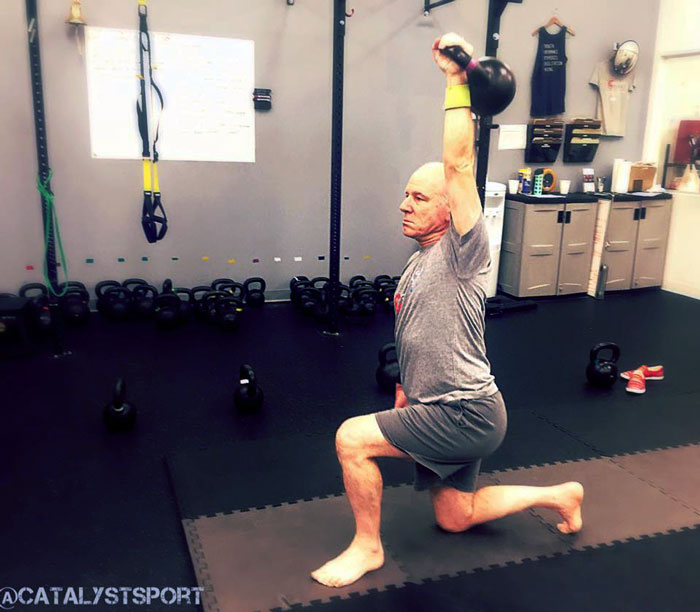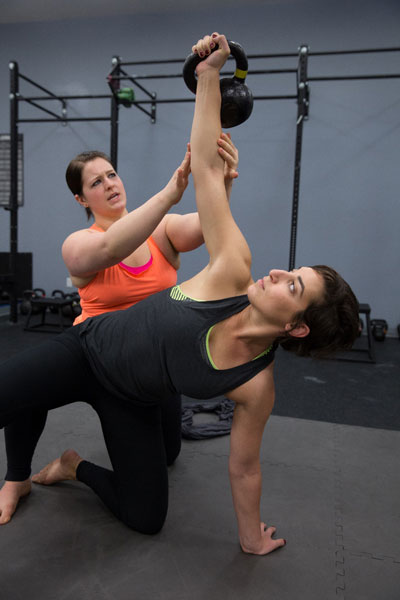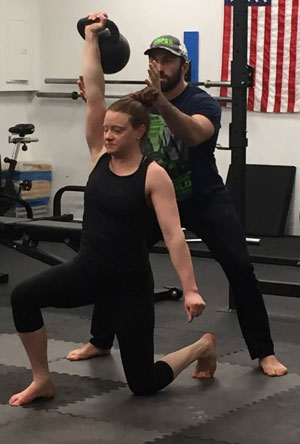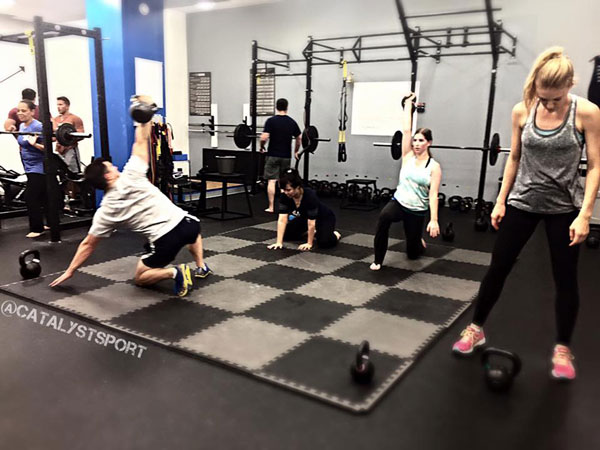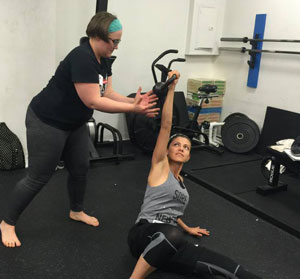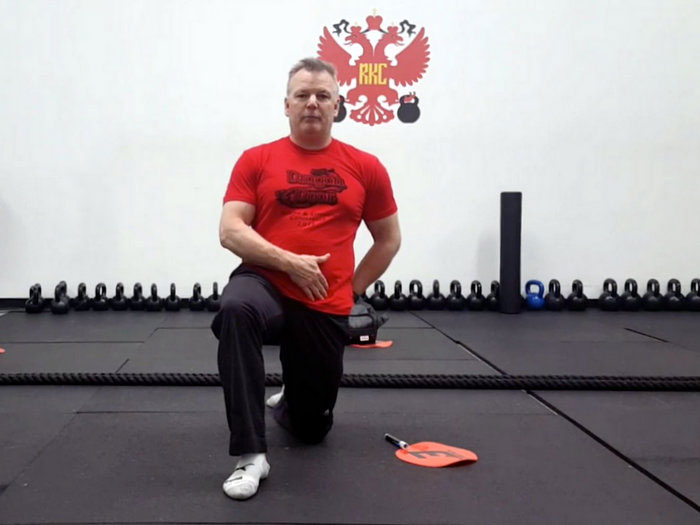
Almost everyone knows that kettlebell training will help your progress with barbell exercises. Unfortunately it doesn’t really work the other way around, until you’ve built up monstrous levels of strength.
The ballistic nature of the kettlebell swing and the coordination and stability required for a successful heavy kettlebell get-up both feel very different when compared to barbell exercises.
As an amateur weightlifter with over 14 years of practice, I’m certainly not dismissing barbell training. My kettlebell training actually began as a supplement to my barbell lifts—and every single minute of kettlebell practice has been worth it.
Since adding heavy one-arm kettlebell swings to my training, my grip has gotten stronger than ever, and my lower back is stronger and more solid for barbell deadlifts. Bottom-up kettlebell squats have helped me stay upright and composed for very heavy barbell front squats.
Until you get hooked on kettlebells, you might not appreciate the value of using the comparatively lighter weights associated with kettlebells as compared to barbells.
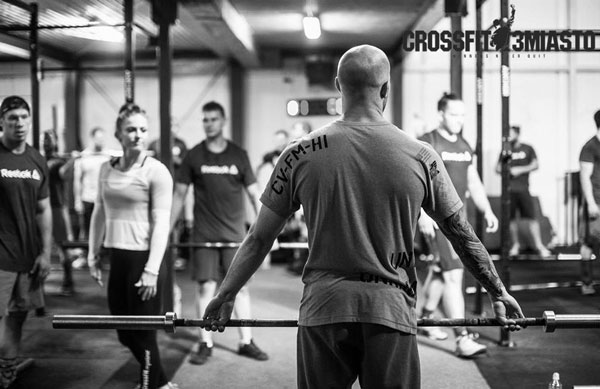
Like most weightlifters, I had some issues with my lifting form. In the Olympic lifts and their variations, the second pull was my nemesis. I just couldn’t get the timing right. I trained with straps, pulled from blocks, tried all kinds of variations—but I still couldn’t get it. The timing of the hip snap is so essential for a powerful acceleration of the barbell. The kettlebell cure was silently standing nearby, but I didn’t understand that until the RKC Workshop.
After the RKC certification, I devoted more time practicing what I learned at the course. Most of my life, I have practiced martial arts and knew that while the basics may be boring, they build the solid foundation of every single aspect of your training—and in life. In my own training, I have spent a lot of time on the basic kettlebell swing.
After being taught the proper kettlebell swing mechanics, I bought some heavier kettlebells and started swinging them regularly. I did sets of 10, 30 and 50—for fun and conditioning.
I focused on pulling the kettlebell behind myself, before I accelerating it with my glutes. Locking the quads and bracing the core as a split-second break at the top of the swing taught me more than the past few years of weightlifting alone. I now understood that my movement pattern had been causing the problems in my Olympic lifts. After establishing a solid foundation for the hinge—and its dynamic variations—it can easily transfer to the second pull of many Olympic barbell lifts.

Since that realization, I focused on kettlebell training and stopped Olympic lifting for about three months. I practiced squats, deadlifts and presses but with minimal volume and heavier loads because I was worried that I’d lose some of my maximal output.
But, when I came back to Olympic lifting and tried barbell snatches again, the bar went up so fast on the first attempt that I almost couldn’t control it!
Since then, I’ve applied the same training plan for my clients and students. It’s worked for them as well—no one has problems with the second pull anymore. It used to be the trickiest part of many lifts, but the problems have been eliminated with our kettlebell practice.
The Hardstyle kettlebell swing is a clever teaching method for the hip snap, which is crucial for the correct mechanics on the second pull in weightlifting.
If you don’t want to struggle as long as I did with the second pull of the Olympic lifts, be sure to train with a certified RKC instructor so you can learn the right way to swing kettlebells. Soon, you’ll see the barbell fly up faster than ever before.
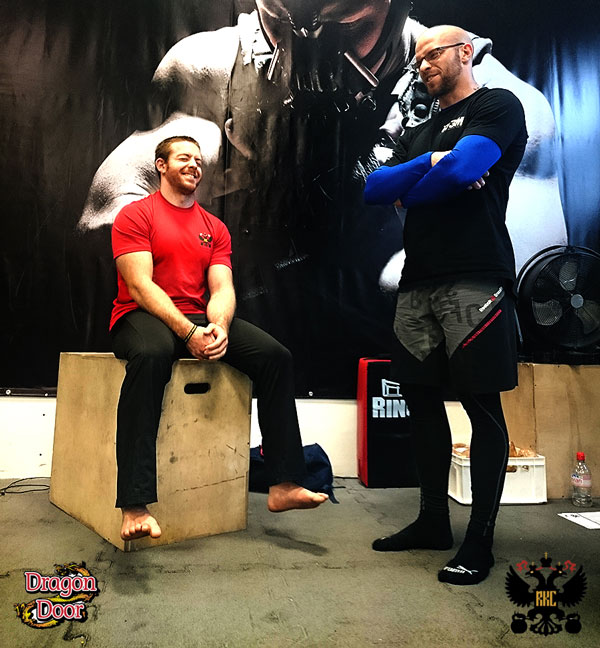
***
Maciej Bielski, RKC is the owner and Head Coach of Crossfit Trójmiasto in Sopot, Poland. He has been very active in martial arts for most of his life. Maciej academics were specialized in physiology and physical effort biochemistry. He now is exclusively focused on coaching. He is currently the leading specialist in Athletic Training and Training Methodology in Poland. He gives lectures and teaches workshops in many locations including Mauricz Training Center. Visit his blog at Ugot2BeStrong and click here for more information about RKC in Poland
